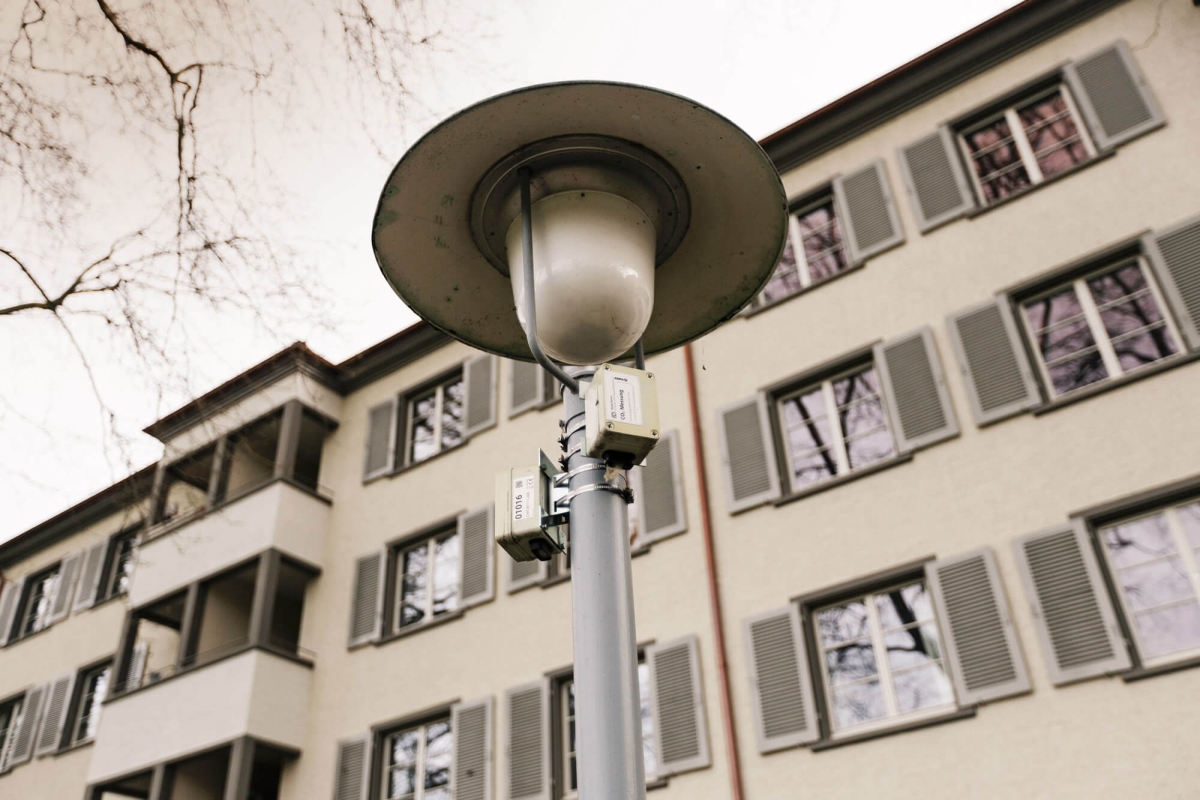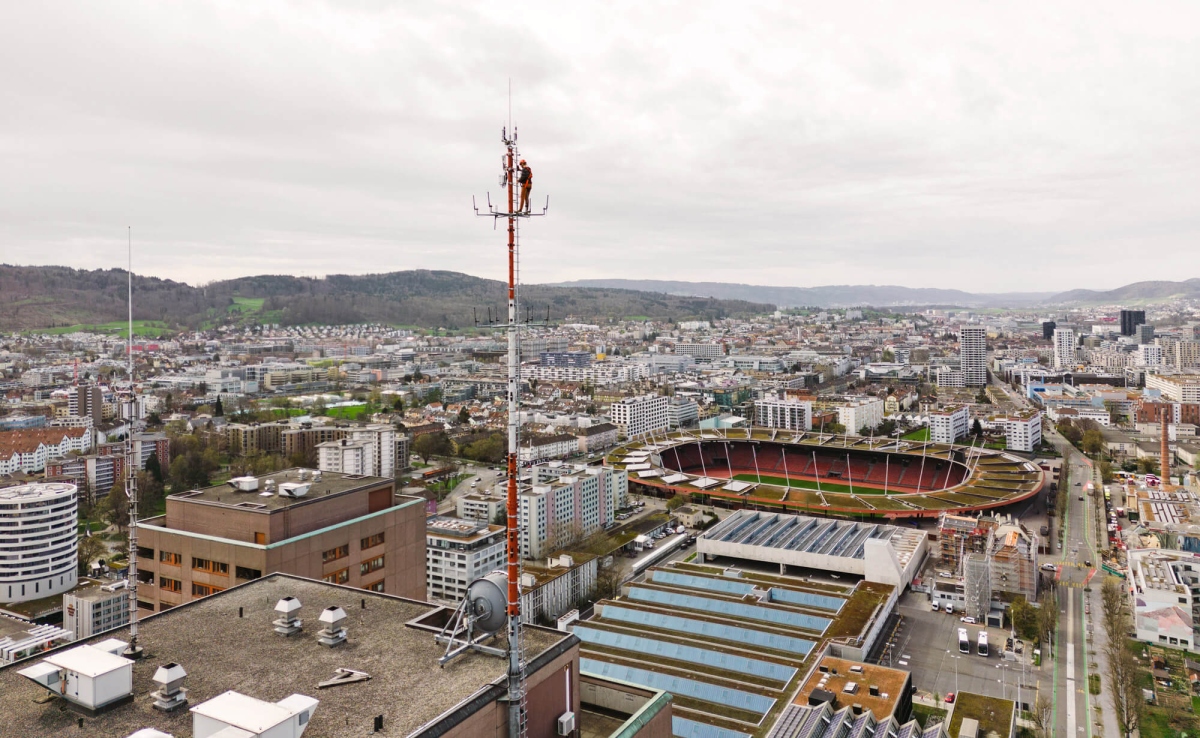
Walking through the streets of Zurich, you may not notice the small, grey devices working quietly across the city. Yet these boxes are providing a wealth of information on the Swiss city’s progress in reducing its greenhouse gas emissions.
Key takeaways
- Verifying climate progress. Zurich is using atmospheric sensors to independently track its progress towards carbon neutrality. These have revealed that its fossil carbon emissions are lower than previously estimated.
- A permanent system. The city plans to integrate a permanent, budget-friendly sensor network to continue monitoring greenhouse gas emissions and boost transparency.
Thanks to atmospheric observation sensors, local authorities in Zurich are now able to track their progress towards the city’s goal of achieving carbon neutrality by 2040.
Positioned by the ICOS Cities project in 2022, the 60 sensors are gauging the evolution of greenhouse gas emission levels over time. Preliminary results reveal positive news as they suggest that the city has significantly lower fossil carbon emissions than previously thought.
Before the ICOS Cities project, Zurich was fully reliant on its emissions inventory for an overview of its carbon emission levels. This inventory uses public and private data to compile sources of carbon emissions and the quantities released, tracking sectors such as heating, energy production, industrial processes, road traffic, land use change, and waste management.
However, it lacks real-time data, something that can be provided by sensors.
“While emissions inventories are based on data gathered by governments or disclosed by businesses, atmospheric observations make it possible to independently check carbon levels,” explains Dr Lukas Emmenegger, Head of Laboratory at Empa, and scientific team lead for Zurich in the ICOS Cities project.
While emissions inventories are based on data gathered by governments or disclosed by businesses, atmospheric observations make it possible to independently check carbon levels.
Dr Lukas Emmenegger, Head of Laboratory at Empa, and scientific team lead for Zurich in the ICOS Cities project.
By comparing data obtained from the sensor network with the city’s emissions inventory, local authorities can pinpoint key emission sources, enabling targeted, data-driven climate action.
From rooftops to trees
Small sensors were installed on public signs and trees around the city, with larger greenhouse gas monitoring equipment mounted on rooftops. Through a partnership with Swisscom, the ICOS Cities team installed instruments, sampling lines, and wind sensors on the company’s buildings and rooftop antennas.
“We had the luxury of being able to choose between the hundreds of base stations that the telecom provider has in the city and to model which of those locations would work best for atmospheric recordings,” says Dr Emmenegger.
In addition, the city police provided access to their telecommunication antenna on the Hardau tower complex in the heart of the city, which stands 114 metres above street level.

Once the instruments were installed, models simulating the movement of greenhouse gases within the city were used to calculate emissions based on observational data. The measured CO2 concentrations were then attributed to specific fossil fuel and natural sources.
However, the nearby forests complicated things as the natural flow of carbon produced and absorbed by nature, known as biogenic flux, made determining human-induced emissions more difficult.
“It’s very important that we are able to determine the biogenic flux from nature accurately, otherwise we may draw the wrong conclusions about the CO2 flux from human activities,” says Dr Emmenegger.
In light of this, the project team improved their models to account for a wide range of factors, such as the number of trees, prevailing wind patterns in the city, and human respiration.
Tracking climate action transparently
After three years of observations, the project team was able to develop three largely independent approaches to quantify Zurich’s greenhouse gas emissions. This laid the groundwork for a permanent emissions monitoring system in the city, with the local government choosing to continue the mid-cost sensor network combined with high-resolution atmospheric modelling.
“At the end of the project, we would like to have created an observation network and model system which is as precise and as budget friendly as possible. That’s what the ICOS Cities project is all about,” says Dr Emmenegger.
The data generated by the atmospheric observation sensors will also help boost transparency around mitigating emissions, providing citizens and the media with information on the city’s progress towards its climate goals.
“If Zurich’s CO2 emissions drop to nearly zero by 2040 in line with the city’s climate mitigation goal, we should be able to observe that through observations in the atmosphere,” says Dr Emmenegger.
“The local politicians are very interested in having that capability for many reasons, but an obvious one is that it creates trust between residents and the municipality,” he adds.
Collaboration is also key to the project’s success, he says.
“One of my major messages is really you cannot do this by yourself. You need collaboration both with the city and with private partners. You need to trust each other and find a willingness to contribute to a common goal.”
